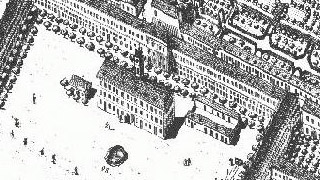The baroque City - History of Vienna
In the early 18th century the landlords, especially the land-owning clergy, began to join in the growing settlement on a large scale by parcelling out some of their land. A number of settlements arising at the time originated with measures taken by the Monastery of Klosterneuburg (Augustinian canons) on the Danube, a few miles upstream of Vienna, which owned extensive properties in the surroundings of Vienna, both north of the Danube and west of the Linienwall. The names of settlements such as Floridsdorf and Gaudenzdorf remind us to this day of provosts holding office in Klosterneuburg at the time, to wit Floridus Leeb and Gaudenz Andreas Dunkler.
Inside the Linienwall and, hence, within the suburban zone, it was above all the respected Schottenkloster, or Monastery of the Scots, which had such properties as the Schottenfeld and the Breitenfeld parcelled out and settled. Today, all of these are toponymic terms in Vienna. The Schottenfeld is an interesting case in point. The concentration of silk manufacture in this area at the time suggests that these measures were enormously successful economically. The Schottenfeld was popularly referred to as "Brillantengrund", or diamond district, a telltale designation testifying to the wealth of the resident silk manufacturers.
In the inner city with its ring of fortifications itself, it was the development of religious and church life that provided a new turning point for construction programmes in the 1780s.
Reformation
The similarity with the reformation and "counter-reformation monasteries" of the 16th and 17th centuries is obvious. Emperor Joseph II, the son of Maria Theresa, allowed non-Catholic religious denominations to be practiced (Toleranzpatent). He also dissolved a number of monasteries and reformed parish church services. His endeavours were mostly directed against monastic communities chiefly devoted to a life of contemplation. He sought to encourage the establishment of a dense network of new parishes to improve religious services for the population. Particularly the dissolution of monasteries in the inner city made available both buildings and sites, which were put to new uses. The measures taken by Joseph II also included an order to relocate existing cemeteries from densely built-up areas, although this tendency had become apparent in the inner city as early as the first half of the 18th century.
City of Vienna | Municipal and provincial archives of Vienna
Contact form

